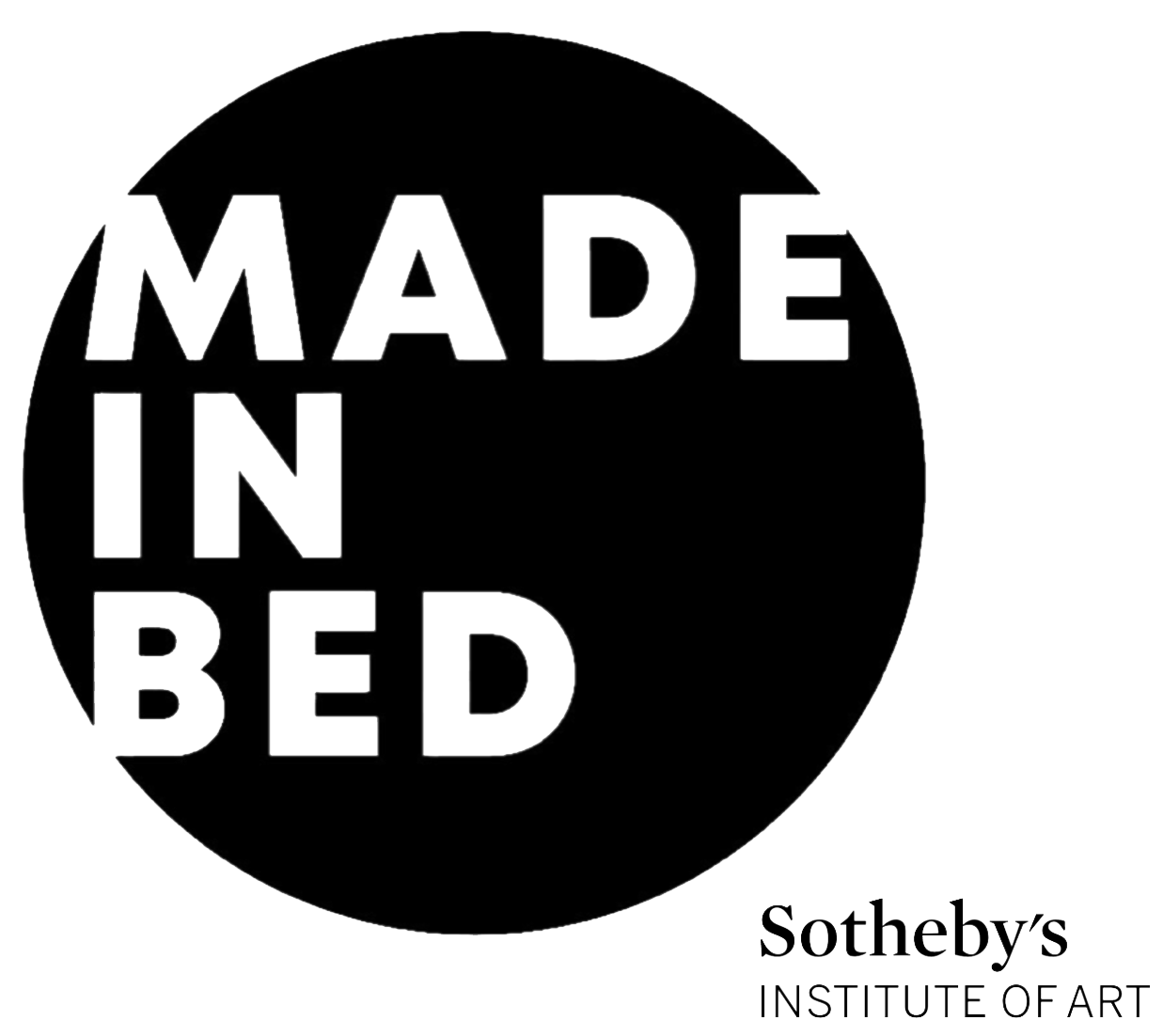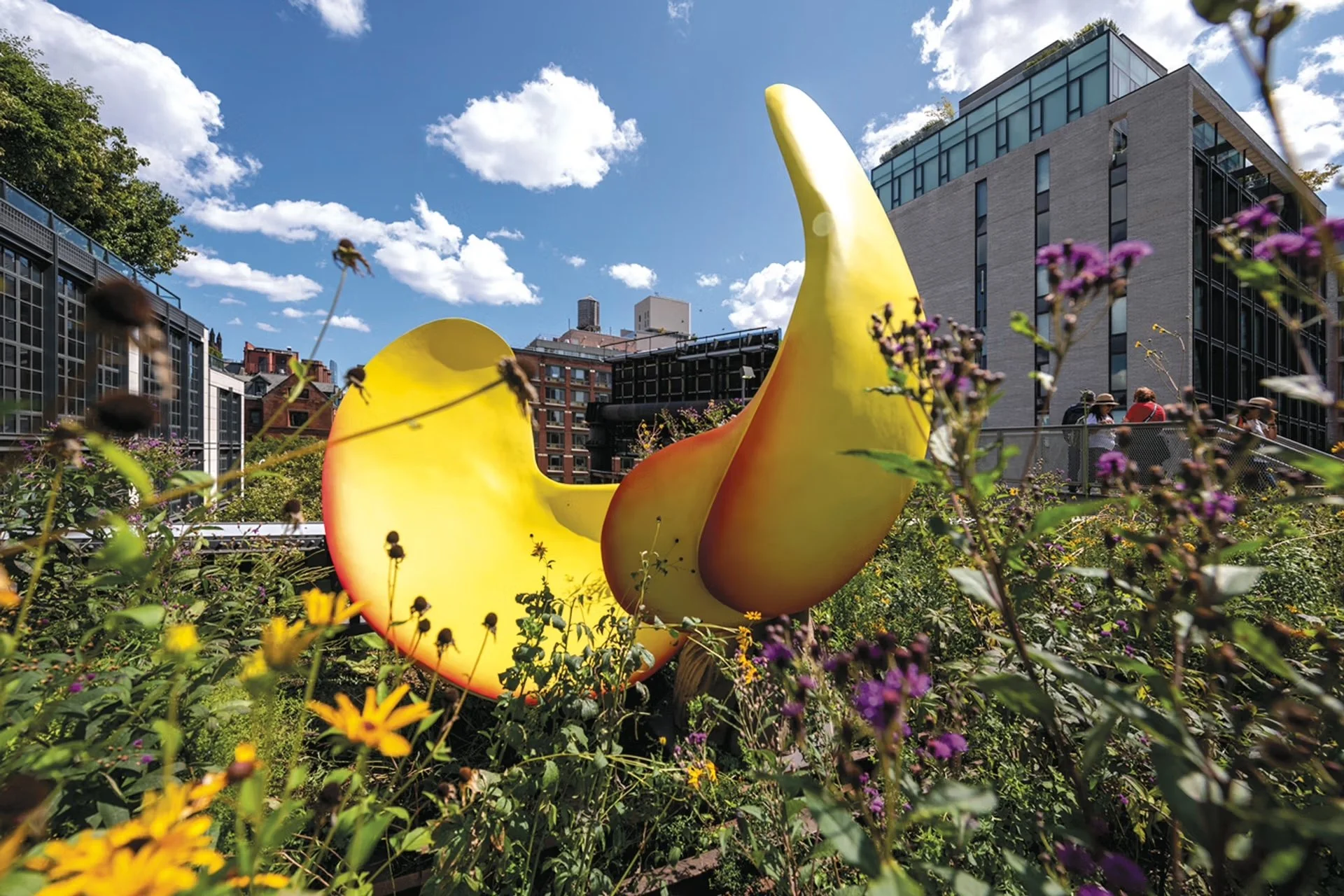The High Line: Rethinking Art in the Urban Landscape
Once a retired railway suspended above Manhattan's Westside, the High Line has been reborn into one of New York City’s most innovative public spaces. Now the repurposed tracks function as a site for community, culture, and artistic experimentation. With a focus on contemporary art, the High Line introduces creative practices into the urban landscape in ways that challenge conventional boundaries between gallery and the street.
The High Line in 1934. Photo Courtesy: the High Line.
A BRIEF HISTORY …
Before the High Line came to be, New York City faced a dangerous predicament. In the 1800s, the freight railways ran at street level, creating hazardous crossings for pedestrians. These conditions lead to frequent and often fatal accidents. In an effort to reduce risk, the city decided to make a major infrastructure change by removing the tracks from street level and constructing an elevated rail line instead.
In the 1930s, when the construction for the High Line was finally completed, the railway was a huge success and played a huge role in transporting goods through the Meatpacking District and Chelsea neighborhoods. The original High Line was unique, because, unlike traditional railways, its elevation allowed the line to connect directly to warehouses and stores. This made it easy to load and unload goods straight from the train into buildings. However, despite the innovation of the High Line, the rise of the trucking industry directly negated the necessity for rail based transport. By 1990, the railway was left completely abandoned.
The High Line overgrown. Photo Courtesy: Joel Sternfield and the High Line.
THE TRANSFORMATION
Left to decay and overgrown with plants, the structure was seen as an eyesore by many and was at risk of being torn down. In 1999, two local residents, Robert Hammond and Joshua David, inspired by the natural beauty slowly taking over the manmade steel structure, saved the future of the High Line by preserving its structure and helping shape it as the landmark it is known as today. To protect the structure, neighbors formed a nonprofit group called Friends of the High Line, made up of local conservationists, community members, and city officials. Opening in phases between 2009 and 2014, the High Line became a 2.3km linear park like no other, featuring native plants, curated gardens, modern architecture, and views of Manhattan. It quickly became a model for urban renewal around the world.
The High Line at the Rail Yards (between 30th and 34th streets and 10th and 12th avenues) opened in 2014, including a temporary walkway. Photo Courtesy: The High Line.
As the park grew in popularity, it became clear that the High Line was more than just a place for an afternoon stroll, it had become a canvas for public life. The park was naturally transforming into a culturally rich gathering place. With the help of Friends of the High Line, High Line Art was launched in 2009 to formally integrate the art world into the park's landscape.
High line Art is a public art program that commissions and exhibits installations along its route. The program is curated by Cecilia Alemani, who has an extensive and dynamic background in the arts. She has curated exhibitions at renowned venues such as Gagosian and Tetsuaya Ishida, served as the director for the 59th Venice Biennale, and was also the curator for the Italian pavilion for the 57th Venice biennale. Alemani’s role extends far beyond selecting works for public display, she has defined the possibilities of public art by broadening the range of mediums and forms it encompasses. Regarding High Line Art she has said “I wanted to think about pushing those borders and those edges to include many mediums,” and that is exactly what he has done. Alemani has reimagined public art.
In a past interview with The Observer, Alemani commented on the unique challenges and advantages of curating for the highline, an open air space with no walls and no windows. Her approach redefines traditional curatorial practices by placing artworks not where they are typically expected, but where the best interest with the environment and where they will garner the most attention. This means situating pieces outdoors that are not conventionally designed for exterior display. While public art is usually sculptural and weather resistant, Alemani challenges this norm by integrating more experimental and unexpected works into the landscape. Drawing inspiration from advertising strategies, she has also begun repurposing billboards along the high line to exhibit contemporary art transforming commercial space into a platform for cultural engagement.
Teresa Solar-Abboud’s Birth of Islands (2024), on the High Line at 20th Street. Photo courtesy: Timothy Schenck and the High Line.
Installed on a massive billboard on West 18th street and 10th avenue, contemporary works selected by Alemani would be showcased on the giant industrial canvas for the people of the High Line. Rotating approximately four times a year, the billboard features large-scale site-specific works by prominent artists such as Maurizio Cattelan, Pierpaolo Ferrair, Sasha Gordon. Their billboards often blur the line between fine art and commercial imagery, capturing the attention of passers-by much like an advertisement, but instead of selling a product, they invite moments of enrichment, enjoyment, and critical thought. These works serve as visual disruptions within the constant flood of capitalist messaging, offering a pause for cultural reflection amid the fast paced urban environment.
Each installation invites not only the view into the world of Contemporary art, but also takes C ontemporary art out of its normal confines of a frame or a gallery, recontextualizing it in the busy urban landscape of Manhattan. This tricky intersection of art and public life illustrates Alemani’s vision of public art as a tool to challenge assumptions and provoke new ways of seeing.
Glenn Ligon, 'Untitled' (America/Me), 2022-2024. Photo Courtesy: the High Line.
In 2025, High Line Art presents a dynamic array of installations, including Rosana Paulino’s The Creation of the Creatures of Day and Night, a powerful textile based installation that explores Afro-Brazilian culture and the legacy of colonialism. The program also includes Tai Shani’s The Sun Is a Flame That Haunts The Night, a sculptural work incorporating surreal candlesticks, and Alex De Corte’s billboard piece Soft Power, repurposing imagery of the Pink Panther. These works continue the High Line’s mission of expanding the role of thought provoking Contemporary art.
Sasha Gordon, My Love of Upholstery, 2024. Photo courtesy: FHL and the High Line.
The High Line exemplifies the transformative potential of adaptive reuse, where industrial space becomes a cultural framework. Seamlessly merging urban design with ecological renewal and contemporary art, challenging the transitional boundaries between metropolis and museum. The High Line has evolved into a dynamic public space that allows for the artistic experimentation and engagement to flourish. It is not merely a park but a model for how cities can facilitate cultural dialogue, while simultaneously incorporating both art and community.
Auden Walter,
En Plein Air Co-Editor, MADE IN BED







